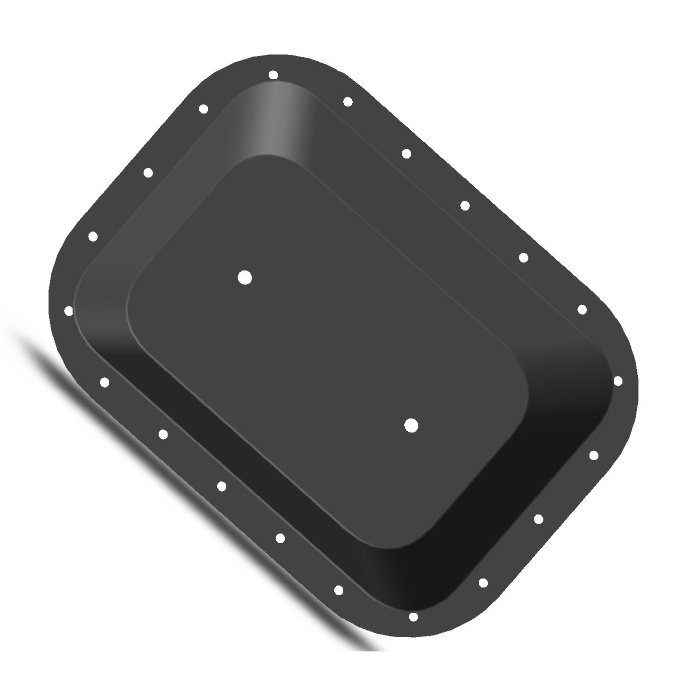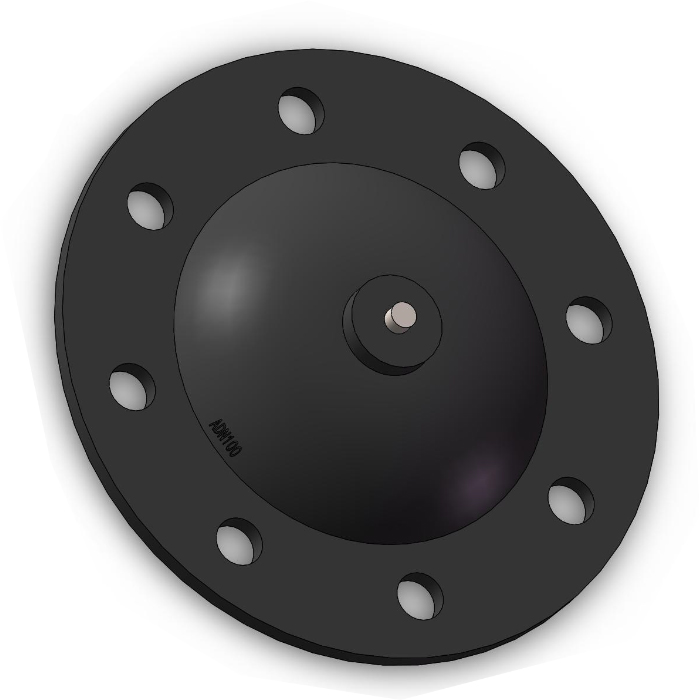We strive to maintain the highest quality standards and meet the needs of our customers. GENERAL SEALTECH’s main business focuses on the design, development, manufacturing, and related mold development of diaphragms.
We mainly produce Teflon / PTFE Diaphragm,Diaphragm Valve pump Diaphragms,LPG CNG Diaphragm,Turbo Actuator Waste-gate Diaphragms,Gas meter diaphragms,Solenoid Pulse Valve Diaphragms, etc. They are used to seal valves for oil, air, and water or as absorbers. We also offer customized molded products that are produced based on customer samples.
| Product Name | aro ptfe diaphragms |
| Materials | HNBR,EPDM,FKM,NR,ACM,etc |
| Brand Name | GENERAL SEALTECH |
| Place of Origin | Hangzhou,Zhejiang,China |
| Product Type | Diaphragm |
| Colors | red,Recommended black |
| Sample | Available |
| Hardness | 20~90 Shore A diaphragm for regulator |
| Packing | PE Bag+Carton |
| OEM/ODM | Acceptatble |
| Export region | Africa,Europe,America… |
| Export Country | USA,France,Italy,Australia,Niger,Australia,Tanzania,Israel…etc |
| Properties | Chemical Resistance,Environment Protective,Steam Resistance…etc |
| Size | DN max = 2000mm, all other smaller sizes will per customer demands |
| Warranty | 1 Year |
| Function | Seal for Machine,Valve,etc |
| After-sale Service | Online technical support |
| Certification | National Sanitary Certificate,NSF,CCS,RoHS,KTW,etc |
| Packaging | carton or according to requirements of the customers |
| Lead time (days) | 7-15 (To be negotiated) |
| Supply Ability | 50000-200000 Piece/Pieces per Month |
Please note: The above table data is for reference only. For specific information, please contact us.
The design principle of a aro ptfe diaphragms is to use the failure strength and failure mode of materials or structures to set personalized control strategies for a certain heat or mass transfer medium, or for the occurrence of certain flow or diffusion effects, in order to achieve specific functions or protocols.
The diaphragm has strong wear resistance, but it is easily damaged during installation. If cracks appear, they should be reinstalled in a timely manner;
During normal use, check the sealing condition of the diaphragm to prevent water leakage;
Please do not change the installation position of the diaphragm product during use to avoid affecting the effect.
Provide customized services exclusive to customers, and customize various diaphragm products according to their needs to meet the needs of different industries.
aro ptfe diaphragms—FAQs Guide
2.Are aro ptfe diaphragms suitable for use in applications involving harsh radiation or extreme pressure differentials?
3.Are aro ptfe diaphragms used in safety relief valves and pressure relief devices to prevent overpressure situations?
4.Are there aro ptfe diaphragms made from eco-friendly or sustainable materials for environmentally conscious applications?
5.Are there aro ptfe diaphragms designed for quick and easy replacement to minimize downtime in industrial processes?
6.How do aro ptfe diaphragms contribute to the precision and accuracy of pressure control and regulation systems?
7.Can aro ptfe diaphragms be customized for specific applications?
8.As a aro ptfe diaphragms manufacturer,What delivery terms do you accept?
9.About aro ptfe diaphragms,What information should the customer provide to get an accurate quote from us?
10.Can aro ptfe diaphragms be used in medical devices, and what biocompatibility standards do they need to meet?
11.How does the thickness of a aro ptfe diaphragms affect its flexibility and pressure resistance?
12.What types of sealing mechanisms are commonly used with aro ptfe diaphragms, such as clamped, bolted, or adhesive seals?
13.Are aro ptfe diaphragms available in different shapes and sizes to suit specific applications?
14.What role do aro ptfe diaphragms play in controlling fluid flow and preventing leaks in pumps and valves?
1.Are there specialized aro ptfe diaphragms for high-pressure applications, and what features make them suitable for these conditions?
Yes, there are specialized diaphragms for high-pressure applications. These diaphragms are designed to withstand higher pressures and temperatures than standard diaphragms. They are typically made from reinforced elastomers or metal materials such as stainless steel or Hastelloy. These materials are chosen for their strength and durability, as well as their ability to resist corrosion and wear. Additionally, these diaphragms are designed with thicker walls and reinforced edges to provide additional strength and stability.
2.Are aro ptfe diaphragms suitable for use in applications involving harsh radiation or extreme pressure differentials?
No, diaphragms are not suitable for use in applications involving harsh radiation or extreme pressure differentials. Diaphragms are designed to be used in applications with relatively low pressure differentials and are not designed to withstand extreme temperatures or radiation.
3.Are aro ptfe diaphragms used in safety relief valves and pressure relief devices to prevent overpressure situations?
Yes, diaphragms are commonly used in safety relief valves and pressure relief devices to prevent overpressure situations. The diaphragm is a flexible membrane that is designed to open when the pressure inside the device reaches a certain level, allowing the pressure to be released.
4.Are there aro ptfe diaphragms made from eco-friendly or sustainable materials for environmentally conscious applications?
Yes, there are diaphragms made from eco-friendly or sustainable materials for environmentally conscious applications. These diaphragms are typically made from natural rubber, silicone, or other biodegradable materials. They are designed to be more durable and longer lasting than traditional diaphragms, and they are also designed to be more energy efficient.

5.Are there aro ptfe diaphragms designed for quick and easy replacement to minimize downtime in industrial processes?
Yes, there are diaphragms designed for quick and easy replacement to minimize downtime in industrial processes. These diaphragms are typically made of materials such as rubber, silicone, or PTFE, and are designed to be easily replaced without the need for tools or special equipment. Additionally, some diaphragms are designed with quick-connect fittings to further reduce downtime.
6.How do aro ptfe diaphragms contribute to the precision and accuracy of pressure control and regulation systems?
Diaphragms are used in pressure control and regulation systems to provide a precise and accurate control of pressure. They are used to separate the pressure sensing element from the process fluid, allowing for a more accurate and repeatable measurement of pressure. The diaphragm also acts as a barrier to prevent contamination of the sensing element, which can lead to inaccurate readings. The diaphragm also helps to dampen pressure fluctuations, providing a more stable and consistent pressure control.
7.Can aro ptfe diaphragms be customized for specific applications?
Yes, diaphragms can be customized for specific applications. Depending on the application, the diaphragm can be made from different materials, such as rubber, plastic, or metal, and can be designed to meet specific requirements.
8.As a aro ptfe diaphragms manufacturer,What delivery terms do you accept?
We accept EXW,FOB, CIF. If you want to use other delivery terms,please contact us.

9.About aro ptfe diaphragms,What information should the customer provide to get an accurate quote from us?
Customers need to provide relevant technical requirements, drawings, pictures, industrial voltage, planned output, etc.
10.Can aro ptfe diaphragms be used in medical devices, and what biocompatibility standards do they need to meet?
Yes, diaphragms can be used in medical devices. The biocompatibility standards that diaphragms need to meet depend on the application and the intended use of the device. Generally, diaphragms used in medical devices must meet the requirements of ISO 10993-1, which outlines the general requirements for biocompatibility. Additionally, depending on the application, the diaphragm may need to meet additional requirements, such as those outlined in ISO 10993-5 for cytotoxicity, ISO 10993-10 for irritation and sensitization, and ISO 10993-11 for hemocompatibility.
11.How does the thickness of a aro ptfe diaphragms affect its flexibility and pressure resistance?
The thicker the diaphragm, the less flexible it will be and the more pressure it will be able to resist. This is because thicker diaphragms are more rigid and can withstand higher pressures without deforming. Thinner diaphragms are more flexible and can deform more easily under pressure, but they are also less resistant to pressure.
12.What types of sealing mechanisms are commonly used with aro ptfe diaphragms, such as clamped, bolted, or adhesive seals?
In general, aro ptfe diaphragms will use these sealing mechanisms:
1. Clamped Seals: Clamped seals are the most common type of diaphragm seal. They are typically used in applications where the pressure is relatively low and the temperature is not too extreme. Clamped seals are easy to install and provide a reliable seal.
2. Bolted Seals: Bolted seals are used in applications where the pressure is higher and the temperature is more extreme. They are more difficult to install than clamped seals, but provide a more reliable seal.
3. Adhesive Seals: Adhesive seals are used in applications where the pressure is low and the temperature is not too extreme. They are easy to install and provide a reliable seal. However, they are not as reliable as clamped or bolted seals.

13.Are aro ptfe diaphragms available in different shapes and sizes to suit specific applications?
Yes, diaphragms are available in different shapes and sizes to suit specific applications. The shape and size of the diaphragm will depend on the application and the type of material used. For example, a diaphragm made of rubber may be used for a water pump, while a diaphragm made of metal may be used for a pressure regulator.
14.What role do aro ptfe diaphragms play in controlling fluid flow and preventing leaks in pumps and valves?
Diaphragms are flexible membranes that are used to control fluid flow and prevent leaks in pumps and valves. They are typically made of rubber or plastic and are designed to flex and move in response to pressure changes. When pressure is applied to one side of the diaphragm, it flexes and creates a seal that prevents fluid from leaking out. This seal is maintained until the pressure is released, allowing the diaphragm to return to its original shape and allowing the fluid to flow freely. Diaphragms are used in a variety of applications, including pumps, valves, and other fluid control systems.
Tags: ptfe diaphragm suppliers,pump diaphragm seals,victor regulator diaphragm,rubber diaphragm valve

